巴斯凯特 – The Khotang Village Khukuri (BaasCate)
¥ 5,700.00
| 默认规格(1英寸=2.54厘米) | |
| 刀片尺寸:13英寸 | 手柄尺寸:5.5英寸 |
| 刀片材质:高碳钢5160 | 手柄材质:木质 |
| 刀片工艺:抛光 | 手柄工艺:抛光 |
| 刀刃锐度:开刃 | 刀刃硬度:55-57 hrc |
| 刀片厚度:7毫米 | 刀鞘材质:牛皮 |
| 附随刀具:有 | 刀身重量:700克 |
| 总体重量:1050克 | 发布日期:2018-09-12 |
| 原产地:尼泊尔 | 发货地:尼泊尔加德满都 |
The Khotang Village khukuri is tribute to a classic khukuri that has been a part of villagers’ and farmers’ lives now and then..
克坦村弯刀向村民和农民生活中一直存在的经典弯刀致敬。
BaasCate : a typical village khukuri from Khotang (eastern Nepal)…
尼泊尔军刀:来自廓特杭(尼泊尔东部)的一个典型的村庄廓尔喀…
A famous and common kukri knife from a remote Eastern village of Nepal called Khotang. It is said that this particular khukuri (shape and size) was made by local many decades ago to help them in their daily domestic chore especially for cutting bamboos/logs and clearing jungle and overgrowth. The Khotang Village khukuri inspires its shape and size from a typical Khotange khukuri called the “BaasCate” however with the enhancement of chirra (fuller), handle butt cap, polished finishing and proper usable small knives (Karda and Chakmak). The Khotang Village khukuri is a tribute to this classic khukuri that has been a part of villagers’ and farmers’ lives now and then.
一把来自尼泊尔东部偏远村庄 Khotang 的著名且常见的廓尔喀刀。这种廓尔喀刀(形状和尺寸)据说是当地人在几十年前制作的,以帮助他们在日常家务中使用,尤其是砍伐竹子/原木和清理丛林和杂草丛生。Khotang Village khukuri 的形状和尺寸灵感来自一种叫做“BaasCate”的典型 Khotange khukuri,但经过了刀刃、手柄末端、抛光处理和适当使用的小刀(Karda 和 Chakmak)的改进。Khotang Village khukuri 是对这种经典廓尔喀刀的致敬,这种刀一直是村民和农民的一部分。
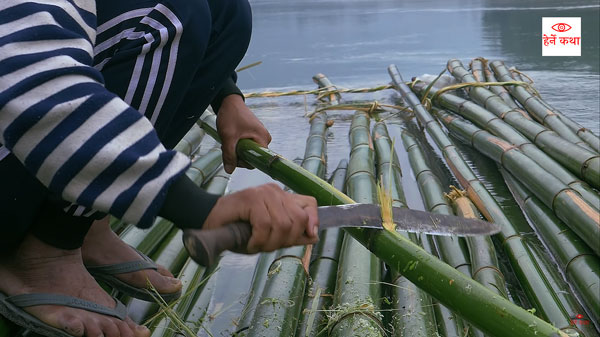
features of Khotang Village Khukuri >>
>- 刀鞘符合人体工程学设计,方便佩戴和使用
- Overall look of the “Chitlange Village” version but little fatter
整体外观和“赤塘村”版本相似,但稍胖一点 - Forging of chirra/fuller (1 ½) for strength and beauty
用于强度和美观的 chirra/fuller(1 ½)的锻造 - Gentle decoration in blade, bolster, handle and keeper for beautification
刀片、刀柄、握把和刀鞘上都装饰有精美的装饰,用于美观 - Cow-hoof (closed) notch of the famous “Chitlange” version
来自著名的“赤塘”版本的牛蹄(封闭) 凹口 - Thinner, lighter and well balanced weight (feel)
更加轻薄,重量(手感)更平衡 - Taller convex edge for strength, durability and deeper impact (cut)
更高的凸起边缘,增强强度和耐用性,并提供更深的冲击(切割)深度 - Stick tang rosewood handle having flared butt cap for durability and better grip
棍身采用紫檀木制作,手柄处喇叭形端盖,增强耐用性和抓握力 - Straight and cross rings and big ridge for beautiful look and sturdy grip
笔直交叉的环和大的脊柱,使手柄看起来更美观,握起来更牢固 - Traditional style, shape and structure
传统风格、形状和结构 - Green leather traditional dab (sheath) having decorated brass kothi (chape)
绿色的皮革传统达布(刀鞘),饰有黄铜扣 - Vertical single belt loop with cross leather stitch
纵向单环皮带,交叉皮革缝线
Chirra & its benefit
奇拉及其带来的益处
Chirra or chirre, fuller or groove in English is actually the shallow lines that run along the panel of the blade. A very skilled craftsman first creates hump/s as required in the panel of the blade when forging and later grinds it out in a bench grinder. A custom made (tempered) grinding wheel is used to grind away mass of the blade along the hump and hallow channel is created. This must be done very carefully and requires years of skill and experience.
英文中的“毛刺”指的是刀片面板上的一条条浅槽。一位技艺精湛的工匠首先会在锻造刀片面板时,根据需要在面板上隆起,然后在砂轮机上进行研磨。使用定制的(淬火的)砂轮沿着隆起研磨刀片材料,从而形成空心通道。这需要十分小心,并需要多年的经验和技巧。
- cuts down the unnecessary weight and thus gives a nice feel and balanced weight
去除多余的重量,带来舒适且平衡的手感 - The pressure/tension generated in impact (cutting) by the edge is evenly distributed in wavy form from edge to spine relaxing the edge. Hence rattling of the edge is minimized
从刀刃产生的压力/张力通过波浪形的方式,均匀地分布在刃口到脊柱,从而使刃口得以放松。因此,刀刃的晃动降至最低。 - Chirra beautifies the look of the blade. The wavy pattern (surface) gives a artistic and unique look
奇拉让刀刃的造型更加美观,波浪形的表面赋予它独特的艺术气息。
Karda Chakmak >> fully functional small accompanying knives (Karda and Chakmak) are included with this khukuri. Here the maker himself makes these two knives to his best ability by putting equal amount of skill, effort and time as the mother blade. This is one of the few khukuris in which the maker (kami) himself does the knives and thus comes in very high quality. Karda = Small utility knife / Chakmak = emergency sharpener and stropping tool
卡尔达查克马克 >> 这款 khukuri 附带全功能的小型配套刀具(Karda 和 Chakmak)。值得注意的是,这些刀具是制造商亲自制作的,他们在这两把刀的制作上倾注了与主刀相同的技艺、精力和时间。这是少数由制造商 (kami) 亲自制作刀具的 khukuri 之一,因此品质非常高。Karda = 小型实用刀 / Chakmak = 应急磨刀和珩磨工具
About KHOTANG >> 關於克霍坦 >>
Geographical Location 地理位置
Khotang is a district in East Nepal that falls under province No 1. It is a hilly region and hence the area of Khotang is predominantly rural which makes external and internal accessibility very difficult. Khotang district is rich in nature. Terraced land, high hills, and green forest are found in abundance here. It is rich in terms of bio diversity as well as it is home to different species of flora and fauna. The most important aspect of Khotang district is the religious values it holds in the lives of people living in Nepal. Halesi Mahadev is one of the most famous religious places, temples, and religious sites in Khotang.
廓特莫是尼泊尔东部的一个地区,属于第一省。这是一个丘陵地区,因此廓特莫的面积以农村地区为主,这使得外部和内部的交通非常困难。廓特莫地区自然资源丰富。梯田、高山和茂密的森林在这里随处可见。它在生物多样性方面也很丰富,是各种动植物的家园。廓特莫地区最重要的一个方面是它在尼泊尔人民生活中所具有的宗教价值。哈雷西马哈德夫是廓特莫最著名的宗教场所、寺庙和宗教场所之一。
Khotang is also well known for their handmade items like pashmina, dhaka, wood carvings etc however they also take pride in being one of the most popular metal artists in Nepal. Many types of high quality khukuris are made in Khotang and supplied all over to Nepal.
廓塘因其手工制品(如羊绒披肩、达卡布、木雕等)而闻名,但也因是尼泊尔最受欢迎的金属艺术家之一而感到自豪。廓塘生产了许多高质量的廓尔喀弯刀,并销往尼泊尔各地。
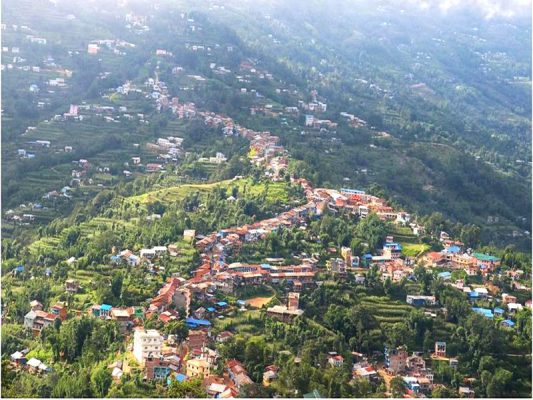
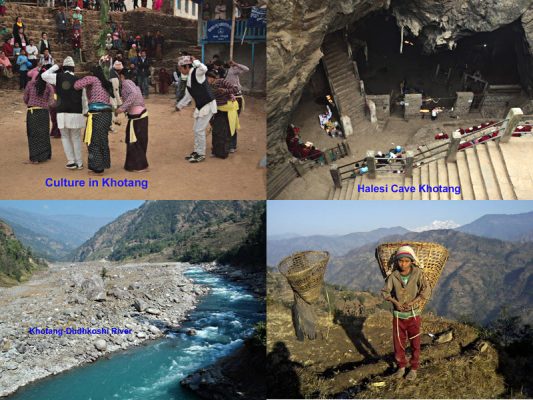
Culture/People 文化/人口
Cultural heritage is embedded among people in this part of district. Khotang is part of the area traditionally called Majh Kirat (middle Kirat /Khambuwan), home to indigenous ethnic Kirat Rai people or famously known as the Gurkha people. Apart from Rais, other ethnic groups and hill castes also live in Khotang like Brahmins, Tamangs, Thakuris, Dalits etc. A large number of people practice their ancient beliefs and follow indigenous religious concepts. The tribes are also synonymous with music and dance and they display a wide array of dances unique to each tribe and some of them have religious significance.
文化遗产深深融入该地区人民的生活。霍塔是传统意义上的马吉基拉特(中基拉特/坎布旺)的一部分,这里是土著基拉特人(也被称为廓尔喀人)的家园。除了基拉特人以外,其他民族和山地种姓也居住在霍塔,例如婆罗门、塔曼人、塔库里人、达利特人等等。许多人仍然坚持他们的古老信仰,遵循土著宗教观念。这些部落也以音乐和舞蹈而闻名,他们展示了各种各样的独特舞蹈,其中一些舞蹈具有宗教意义。
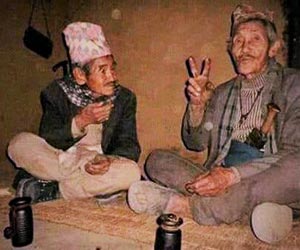
Kamis 神
Kamis or Bishwakarma (BK) is the minority population of Khotang. They mainly live in places called Dorpa, Sholma, Saralung, Mamatim and Kharmi. Mamatim has the highest population of Kamis where most khukuris are made. It even has an iron-ore deposits and kamis used to extract/make iron from it many decades ago. Kamis still adopt the age old making process and the handed down from a father to son generations for centuries. All shapes and sizes of khukuris are made as per the demand and requirement of the job. Some khukuris made in Khotang are inspired from the “Bhojpure” khukuri that originated from their neighboring district, Bhojpur. However “BaasCate” is one of the famous designs that originated in Khotang made to cut bamboo, logs etc. BaasCate literally means Baas for Bamboo and Cate for cutting. In the recent road expansion in the above mentioned places many khukuris were found buried with the dead ones (The Rai community has a ritual of burying the dead ones along with his khukuri to honor him and safe guard him after life)
卡米斯人或比什瓦卡尔玛人 (BK) 是克霍坦地区的少数民族。他们主要居住在多尔帕、肖尔马、萨拉朗、马马提姆和卡尔米等地。马马提姆是卡米斯人人口最多的地区,那里也生产了大部分的廓尔喀弯刀。那里甚至有铁矿床,几 十年前卡米斯人就从中开采/制造铁。卡米斯人仍然采用古老的制作工艺,这种工艺已经代代相传几个世纪了。根据工作的需要和要求,可以制作各种形状和尺寸的廓尔喀弯刀。一些在克霍坦制造的廓尔喀弯刀受到源自邻近地区博杰 布尔的“博杰布尔”廓尔喀弯刀的启发。然而,“BaasCate”是起源于克霍坦的一种著名设计,专门用于砍伐竹子、原木等。 BaasCate 字面意思是“竹”的 Baas 和“切割”的 Cate 的组合。在上述地区的近期道路扩建过程中,在许多死者 захоронениях 发现了埋葬的 khukuris(根据 Rai 社区的习俗,会在死者 захоронениях 埋葬其 khukuris,以示对死者的敬意和保护)
只有已购买此产品的登录客户才能发表评价。
相关产品
尼泊尔军刀
尼泊尔军刀
尼泊尔军刀

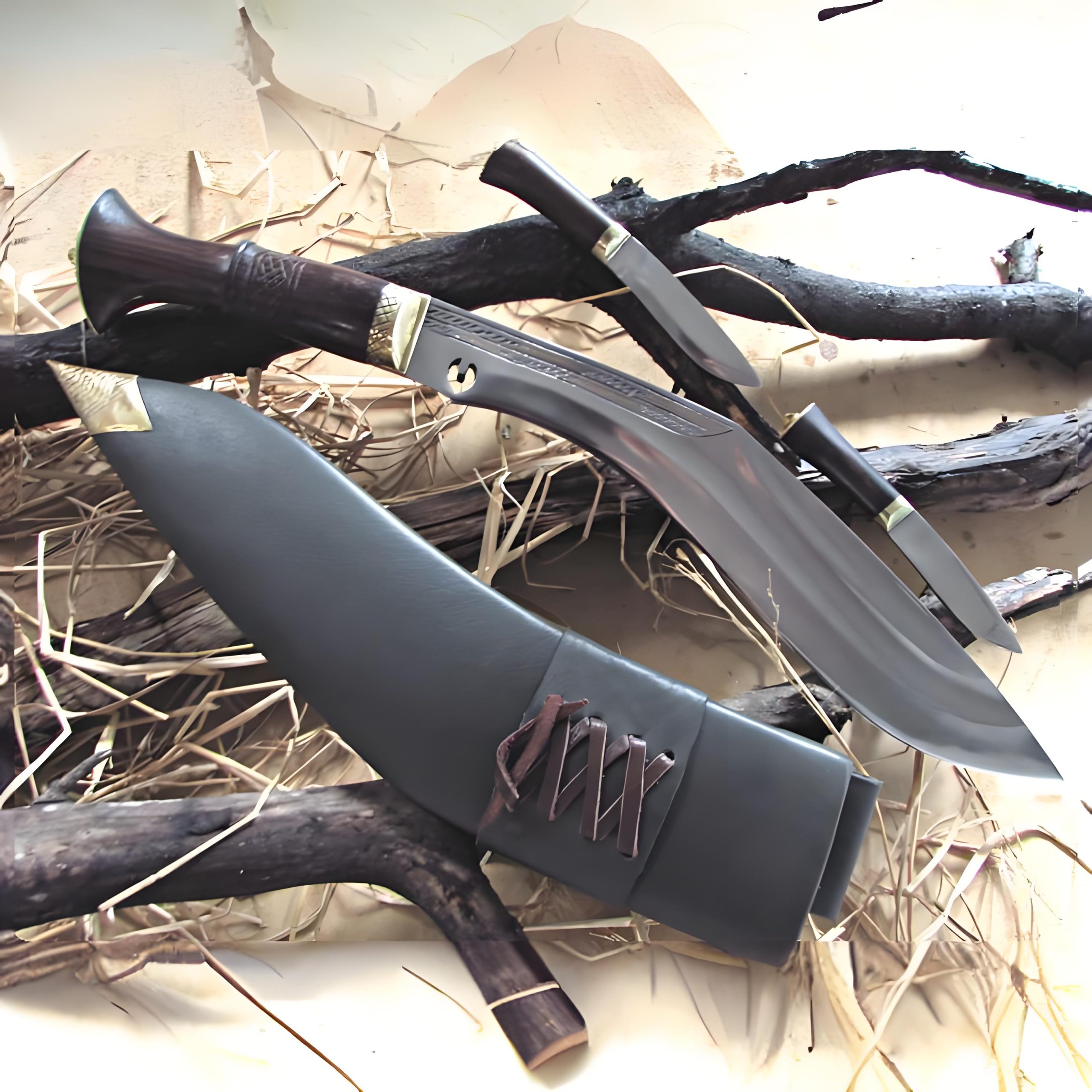
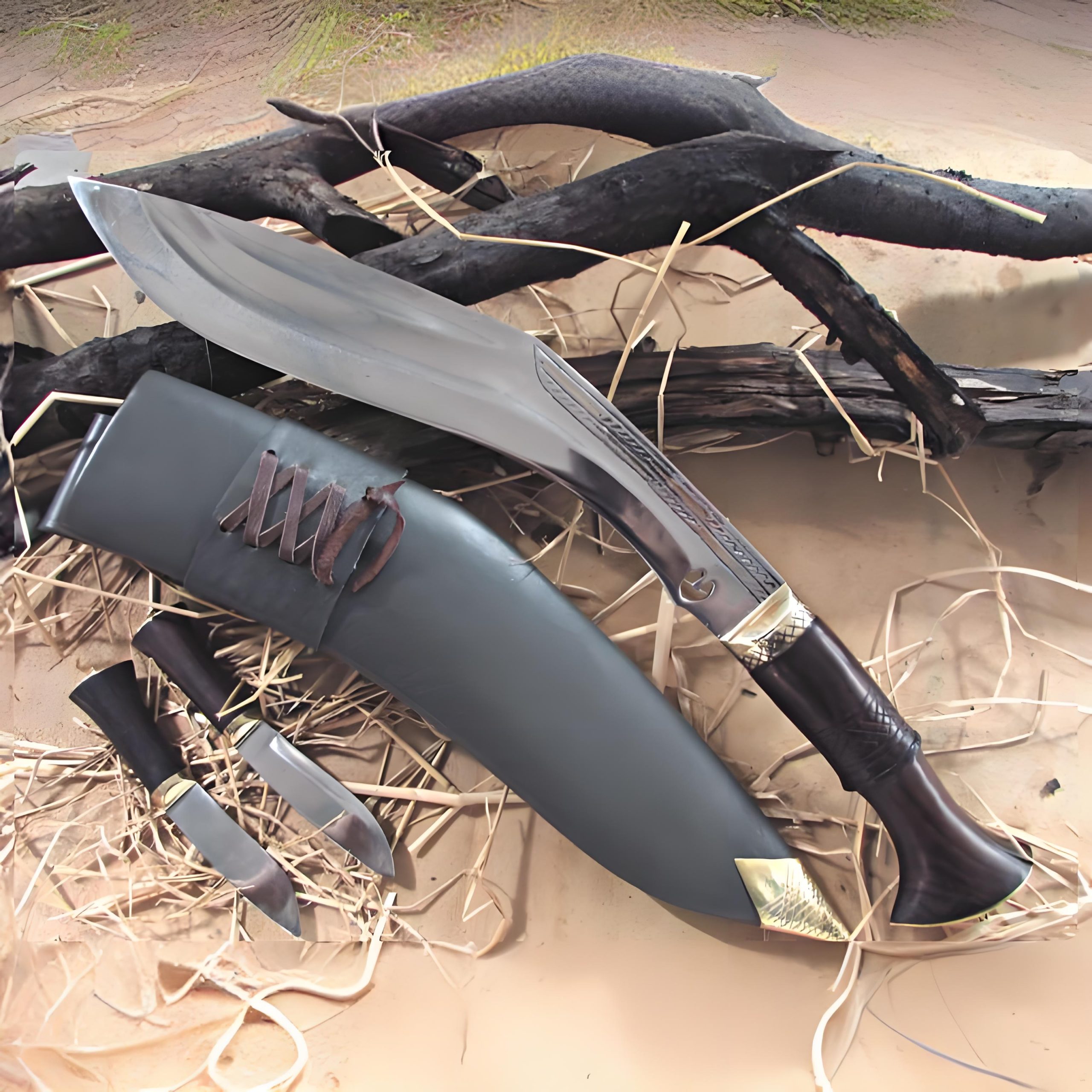
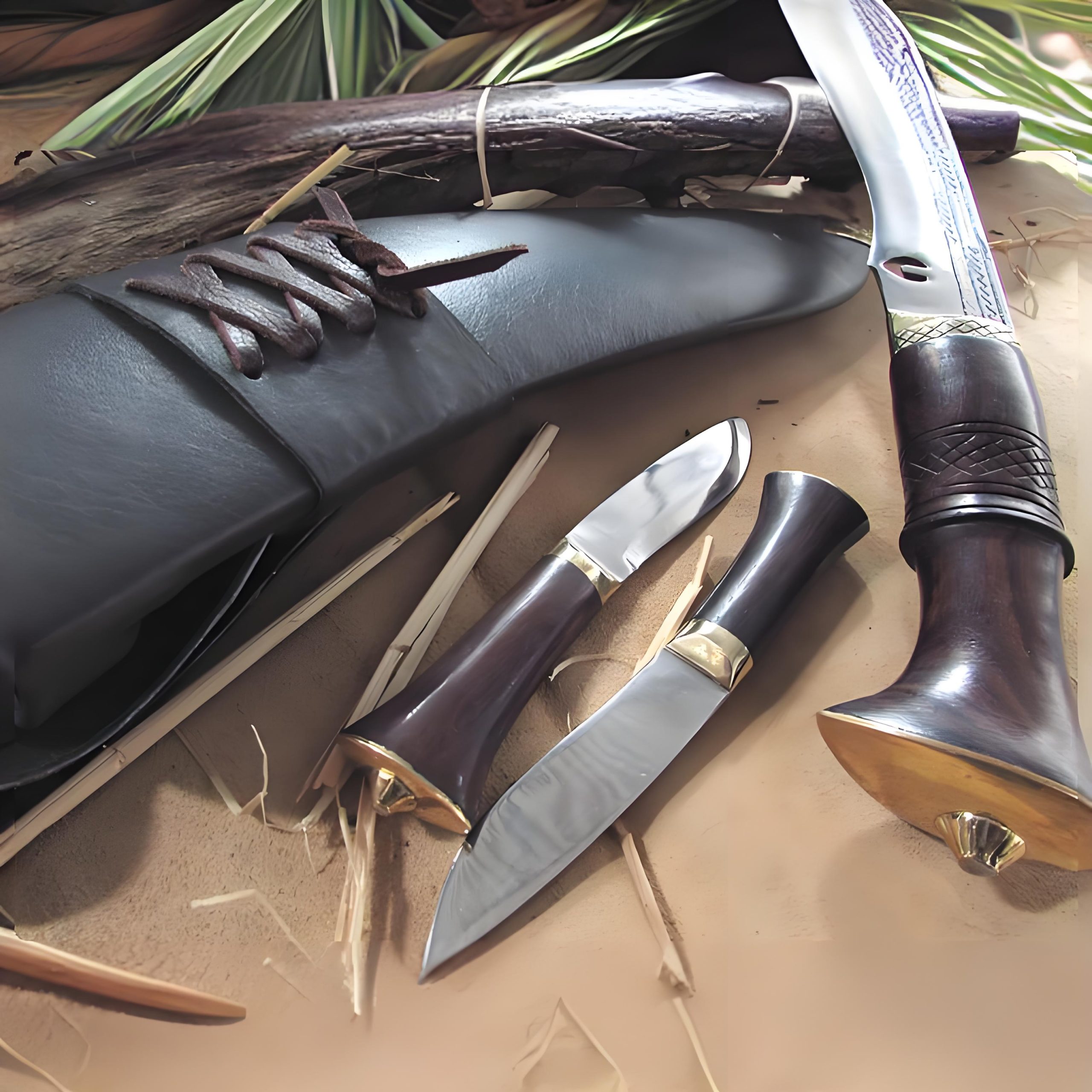
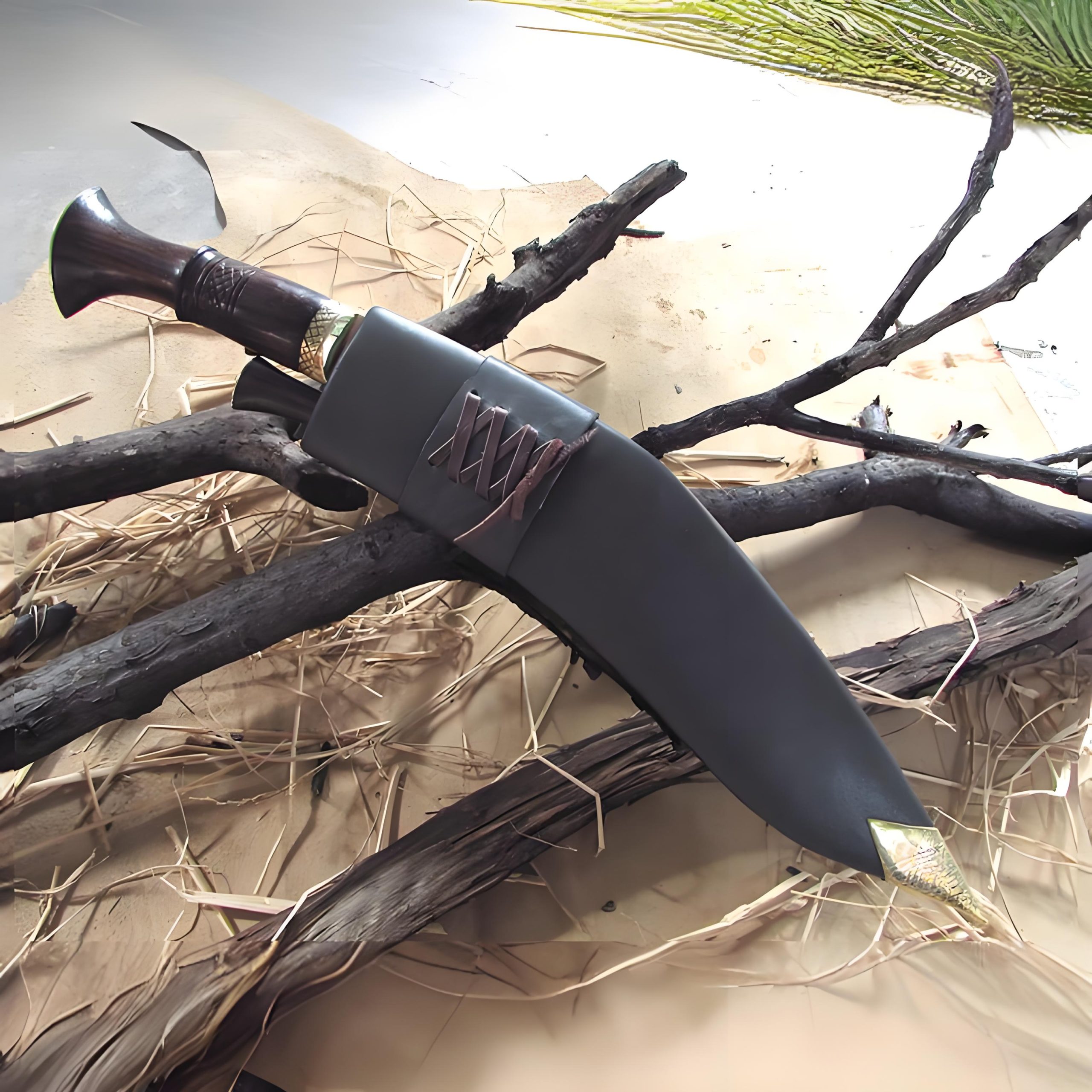
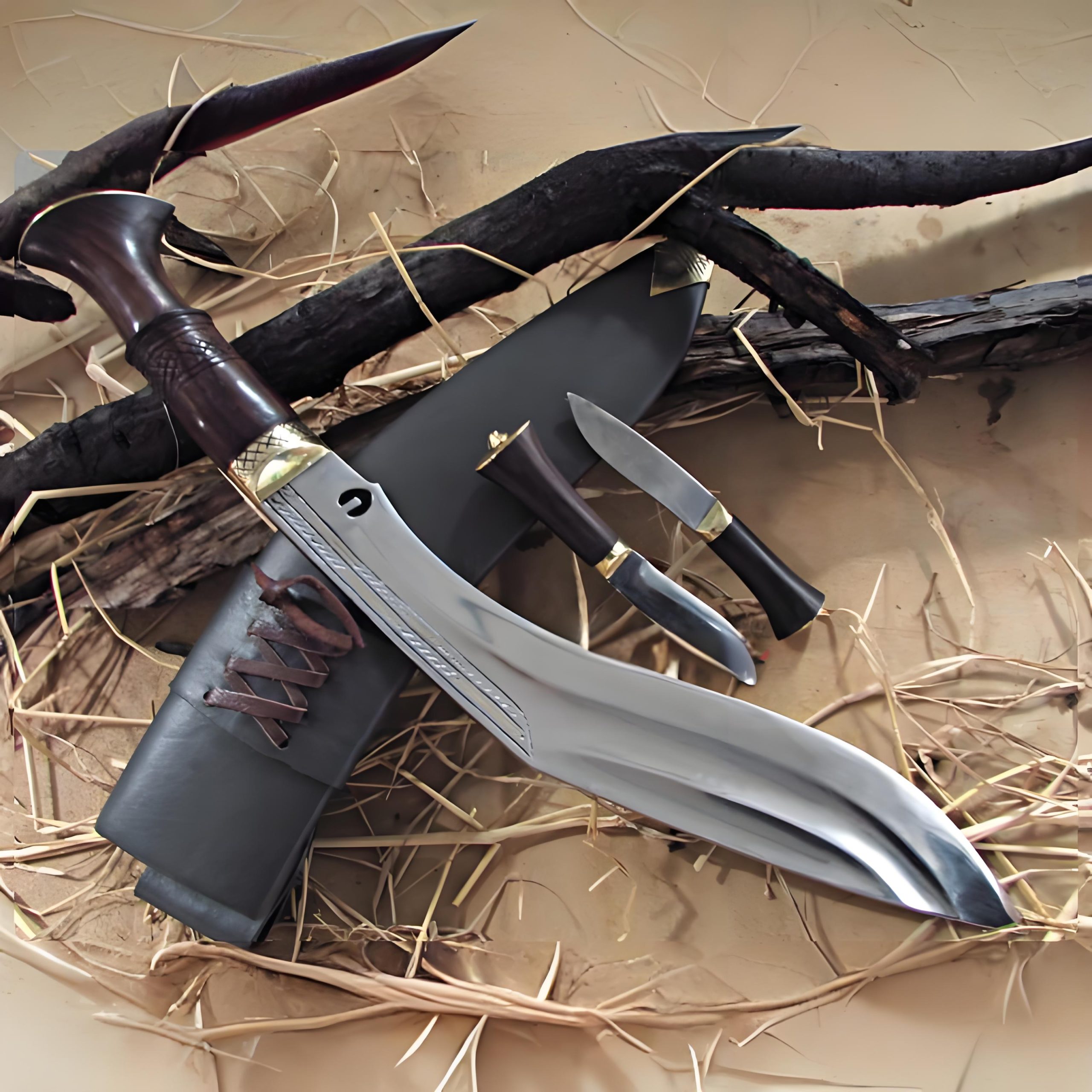
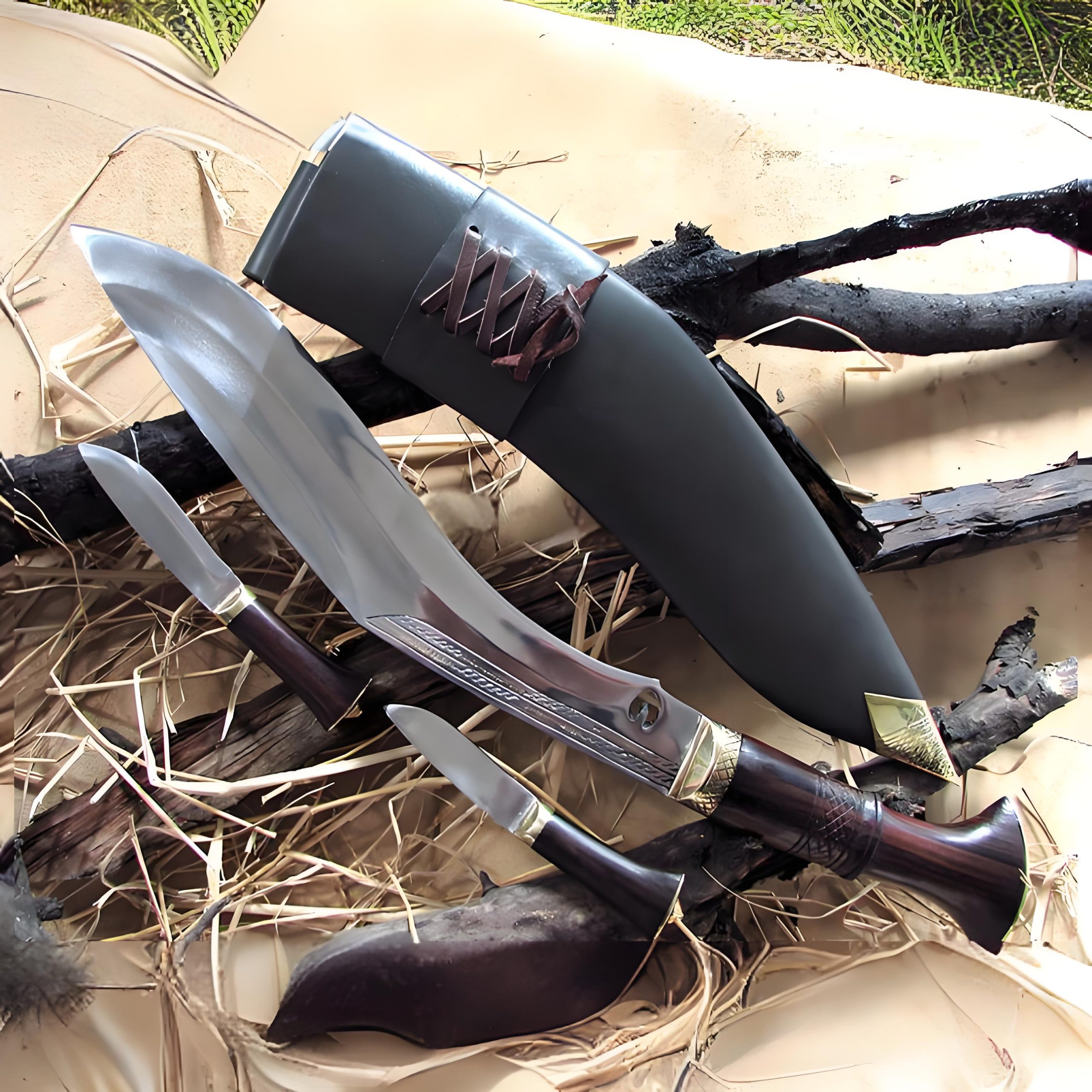
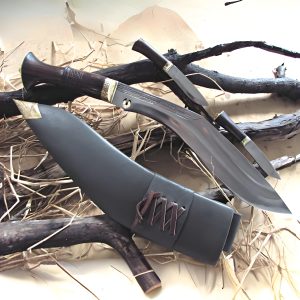
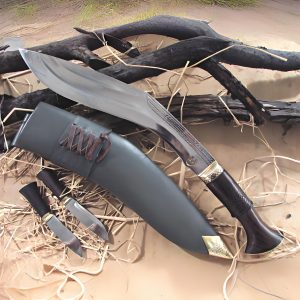
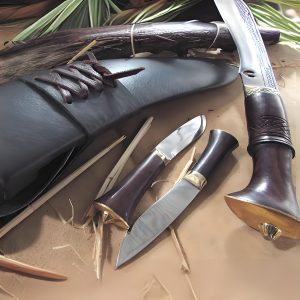
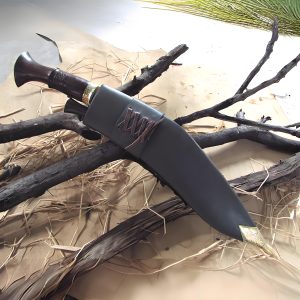
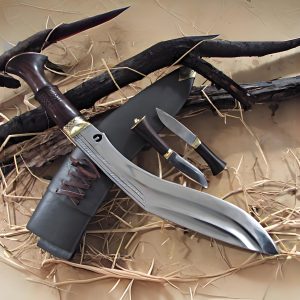
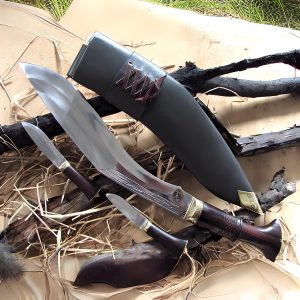
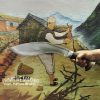

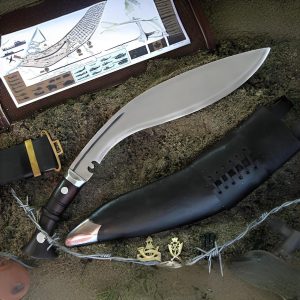
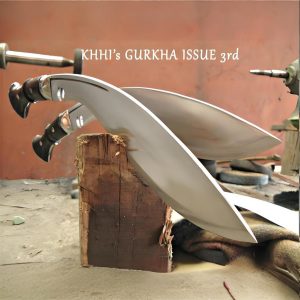
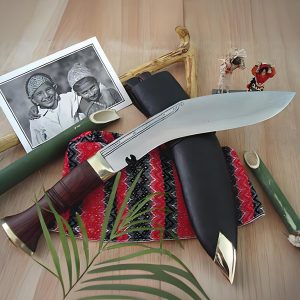
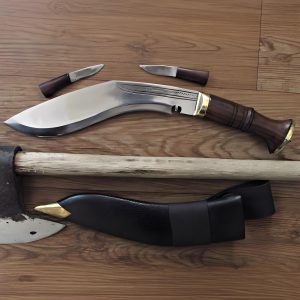
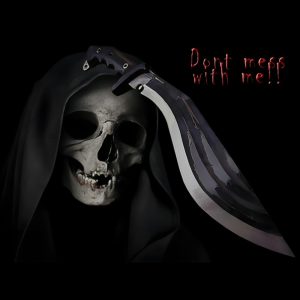

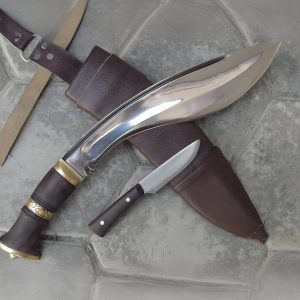
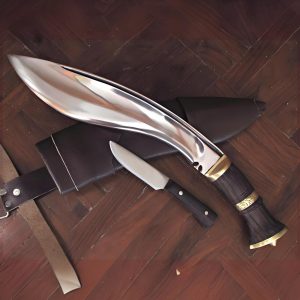
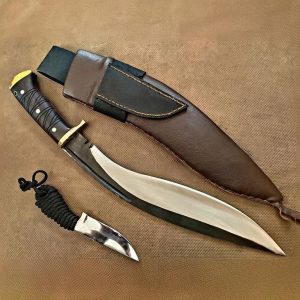
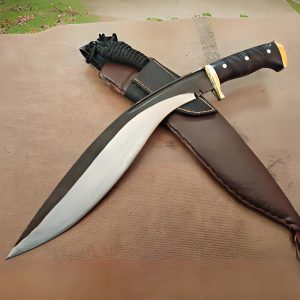
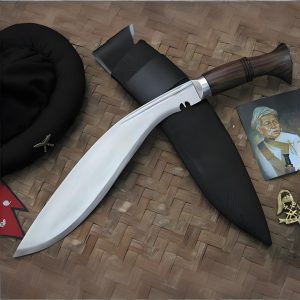
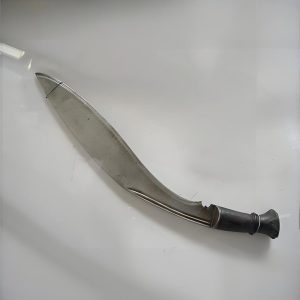
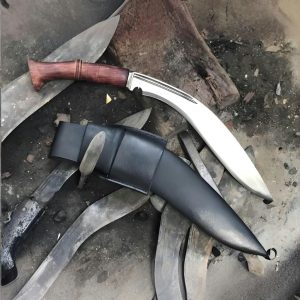
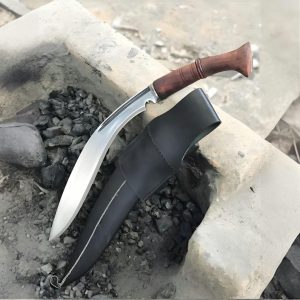
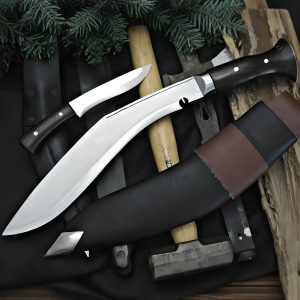
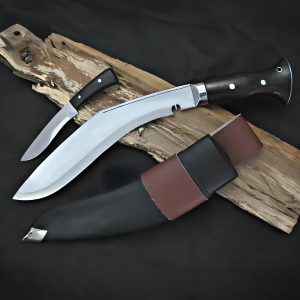
评价
目前还没有评价